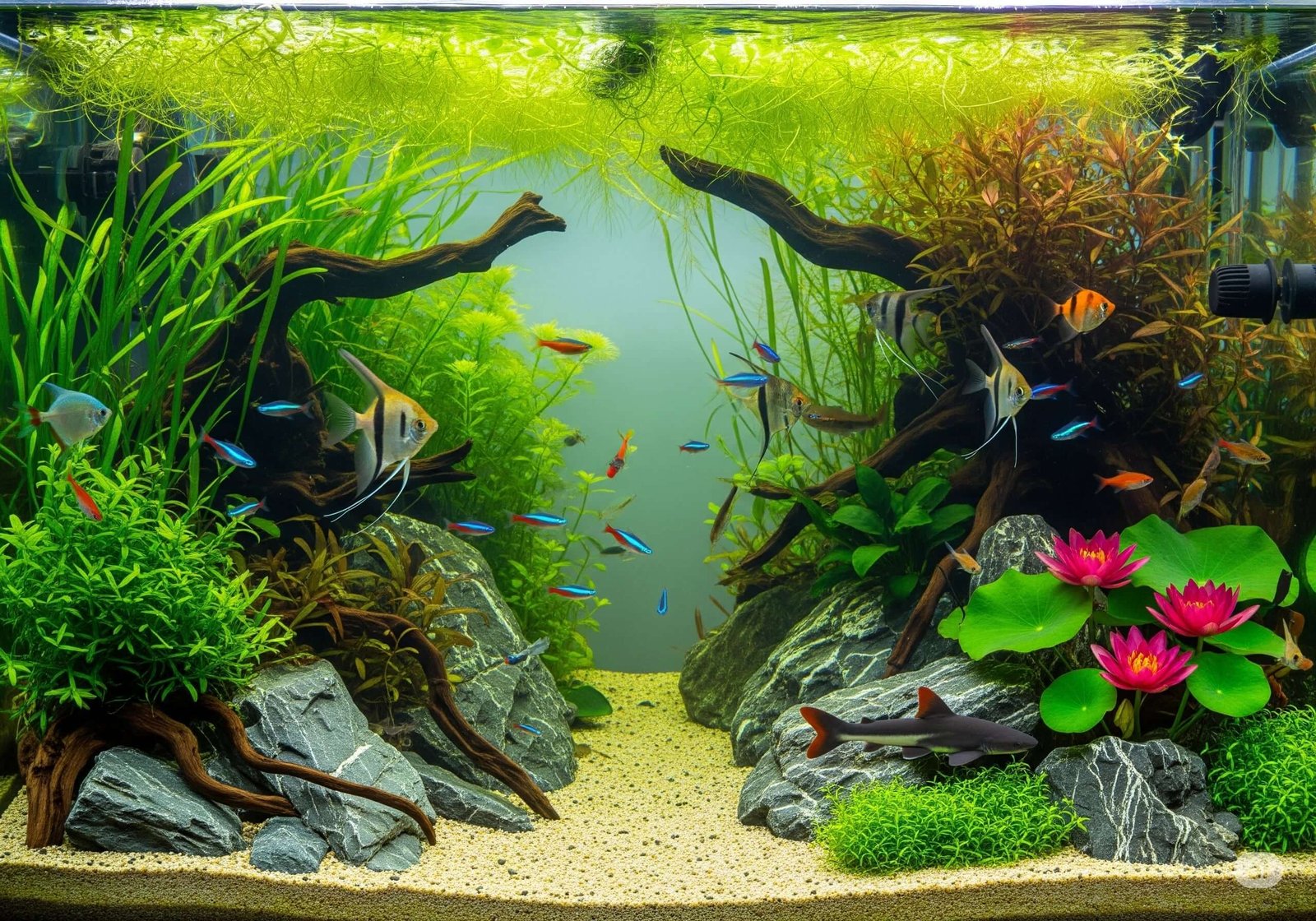A Beginner’s Guide
Creating a vibrant aquarium with live aqua plants is more than just a hobby—it’s a living piece of art. Whether you’re a first-time aquarist or upgrading your tank, this guide will walk you through every step to build a thriving underwater ecosystem.
🧪 Why Choose Live Aqua Plants?
Live plants offer more than aesthetic appeal:
- Natural filtration: They absorb toxins like ammonia and nitrates.
- Oxygenation: Plants release oxygen, improving water quality.
- Stress reduction: Fish feel safer and less stressed in planted tanks.
- Algae control: Healthy plants compete with algae for nutrients.
🧰 Essential Equipment Checklist
Before diving in, gather these essentials:
- Aquarium tank (minimum 20 gallons for stability)
- LED lighting system (full-spectrum for plant growth)
- Heater (maintain 72–78°F for tropical plants)
- Filter (canister or sponge filter for gentle flow)
- Substrate (nutrient-rich soil or aquasoil)
- CO₂ system (optional but boosts plant growth)
- Water test kit (monitor pH, ammonia, nitrites, nitrates)
🪴 Step-by-Step Setup Guide
1. Choose the Right Tank
- Opt for a rectangular glass tank for better light distribution.
- Avoid placing it near direct sunlight to prevent algae blooms.
2. Add Substrate
- Use aquasoil or clay-based substrate for root nutrition.
- Layer 2–3 inches evenly across the bottom.
3. Install Equipment
- Place the filter and heater according to tank size.
- Set up LED lights above the tank—10–12 hours daily.
4. Fill with Water
- Use dechlorinated water at room temperature.
- Pour slowly to avoid disturbing the substrate.
5. Plant Selection & Placement
Choose beginner-friendly plants:
| Plant Name | Type | Placement | Light Needs |
|---|---|---|---|
| Java Fern | Mid-ground | Attached to driftwood | Low |
| Anubias | Foreground | Rocks or wood | Low |
| Amazon Sword | Background | Substrate | Medium |
| Dwarf Hairgrass | Carpeting | Substrate | High |
| Cryptocoryne | Mid-ground | Substrate | Medium |
- Foreground plants: Short and bushy (e.g., Anubias).
- Mid-ground plants: Medium height (e.g., Java Fern).
- Background plants: Tall and leafy (e.g., Amazon Sword).
- Carpeting plants: Cover substrate (e.g., Dwarf Hairgrass).
6. Planting Techniques
- Stem plants: Insert gently into substrate.
- Rhizome plants: Attach to rocks or driftwood.
- Mosses: Tie down with cotton thread until rooted.
7. Cycle the Tank
- Let the tank run for 2–4 weeks before adding fish.
- Monitor water parameters weekly.
🐠 Adding Fish to Your Planted Aquarium
After cycling, introduce peaceful species:
- Neon Tetras
- Guppies
- Corydoras
- Shrimp
- Otocinclus
Avoid plant-eating fish like goldfish unless using hardy plants.
🌱 Maintenance Tips
- Trim plants regularly to prevent overgrowth.
- Fertilize weekly with liquid or root tabs.
- Monitor CO₂ levels if using a system.
- Clean filter monthly without disrupting beneficial bacteria.
- Perform 20% water changes weekly.
❓ FAQs: How to Set Up an Aquarium with Live Aqua Plants
Q1: What’s the best substrate for live plants?
A: Nutrient-rich aquasoil or clay-based substrate is ideal. Avoid gravel unless mixed with plant-friendly additives.
Q2: Do I need CO₂ for live plants?
A: Not always. Low-light plants like Java Fern and Anubias thrive without CO₂, but high-light plants benefit from it.
Q3: How long should aquarium lights stay on?
A: 10–12 hours daily. Use a timer to maintain consistency and prevent algae growth.
Q4: Can I add fish immediately?
A: No. Cycle the tank for 2–4 weeks to establish beneficial bacteria and stabilize water parameters.
Q5: What are the easiest plants for beginners?
A: Java Fern, Anubias, and Cryptocoryne are low-maintenance and beginner-friendly.





